B M Sharma Solutions for Chapter: Rigid Body Dynamics: Part 2, Exercise 3: CONCEPT APPLICATION EXERCISE
B M Sharma Physics Solutions for Exercise - B M Sharma Solutions for Chapter: Rigid Body Dynamics: Part 2, Exercise 3: CONCEPT APPLICATION EXERCISE
Attempt the practice questions on Chapter 4: Rigid Body Dynamics: Part 2, Exercise 3: CONCEPT APPLICATION EXERCISE with hints and solutions to strengthen your understanding. Physics For Joint Entrance Examination JEE (Advanced): Mechanics II solutions are prepared by Experienced Embibe Experts.
Questions from B M Sharma Solutions for Chapter: Rigid Body Dynamics: Part 2, Exercise 3: CONCEPT APPLICATION EXERCISE with Hints & Solutions
A uniform rod of mass and length is acted upon by the forces and Find that:
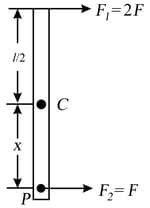
(a) linear and angular acceleration of the rod.
(b) value of for which the point does not accelerate.
Find and of the smooth rod of mass and length .

A uniform rod of mass and length is suspended by two vertical inextensible strings as shown in figure. Calculate tension in left string at the instant, when right string snaps.
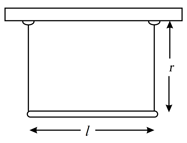
In the figure and are identical blocks, each of mass and is a circular disc of equal mass . Pulley is massless and ffictionless and thread is inextensible. Neglecting friction, find the acceleration of block and .
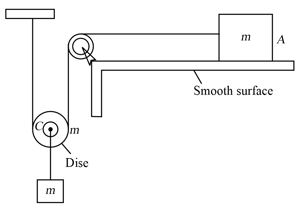
A light thread has been tightly wrapped around a disc of mass and radius . The disc has been placed on a smooth table, lying flat as shown. The other end of the string has been attached to a mass as shown. The system is released from rest. Find the acceleration of the disc and block.
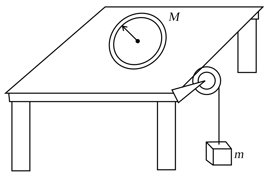
In the arrangement shown, the double pulley has a mass and the two massless threads have been tightly wound on the inner (radius ) and outer circumference (radius ). The block shown has a mass . The moment of inertia of the double pulley system about a horizontal axis passing through its centre and perpendicular to the plane of the figure is . Find acceleration of the center of the pulley after the system is released.
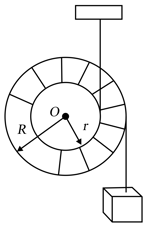
A uniform rod of mass and length which can rotate freely in vertical plane without friction, is hinged at its lower end on a table. A sphere of mass and radius is placed in contact with the vertical rod and a horizontal force is applied at the upper end of the rod.
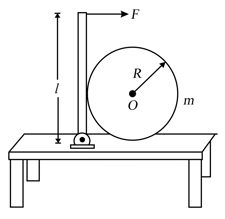
(a) Find the acceleration of the sphere just after the force starts acting.
(b) Find the horizontal component of hinge reaction acting on the rod just after force starts acting.
